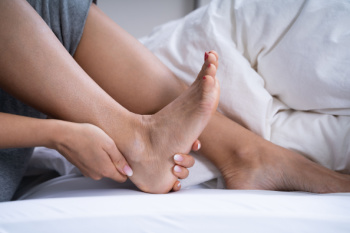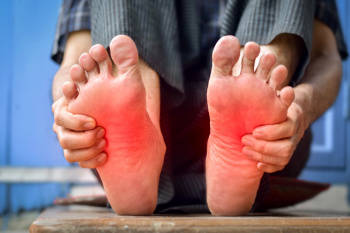
Achilles tendon injuries represent a common ailment affecting individuals engaged in physical activities, particularly athletes. The Achilles tendon is a robust band of tissue connecting the calf muscles to the heel bone. This tendon facilitates essential movements such as walking, running, and jumping. Symptoms of Achilles tendon injuries typically include pain and stiffness at the back of the heel, aggravated during physical exertion or when climbing stairs. Swelling and tenderness along the tendon often accompany these symptoms, indicating potential damage. The name Achilles tendon injury originates from the legendary Greek hero Achilles, who was known for his invincibility in battle except for his heel, which was his lone vulnerable spot. This historical reference underscores the vulnerability of the Achilles tendon to injury, emphasizing the significance of its proper care and treatment. Understanding the definition, symptoms, and origin of Achilles tendon injuries empowers individuals to recognize and address these issues promptly, promoting optimal recovery and prevention strategies. If you have endured this type of injury, it is suggested that you promptly consult a podiatrist who can accurately diagnose and treat this condition.
Achilles tendon injuries need immediate attention to avoid future complications. If you have any concerns, contact one of our podiatrists of Carolina Foot & Ankle Specialists. Our doctors can provide the care you need to keep you pain-free and on your feet.
What Is the Achilles Tendon?
The Achilles tendon is a tendon that connects the lower leg muscles and calf to the heel of the foot. It is the strongest tendon in the human body and is essential for making movement possible. Because this tendon is such an integral part of the body, any injuries to it can create immense difficulties and should immediately be presented to a doctor.
What Are the Symptoms of an Achilles Tendon Injury?
There are various types of injuries that can affect the Achilles tendon. The two most common injuries are Achilles tendinitis and ruptures of the tendon.
Achilles Tendinitis Symptoms
- Inflammation
- Dull to severe pain
- Increased blood flow to the tendon
- Thickening of the tendon
Rupture Symptoms
- Extreme pain and swelling in the foot
- Total immobility
Treatment and Prevention
Achilles tendon injuries are diagnosed by a thorough physical evaluation, which can include an MRI. Treatment involves rest, physical therapy, and in some cases, surgery. However, various preventative measures can be taken to avoid these injuries, such as:
- Thorough stretching of the tendon before and after exercise
- Strengthening exercises like calf raises, squats, leg curls, leg extensions, leg raises, lunges, and leg presses
If you have any questions please feel free to contact our offices located in Mount Pleasant and Charleston, SC . We offer the newest diagnostic tools and technology to treat your foot and ankle needs.






